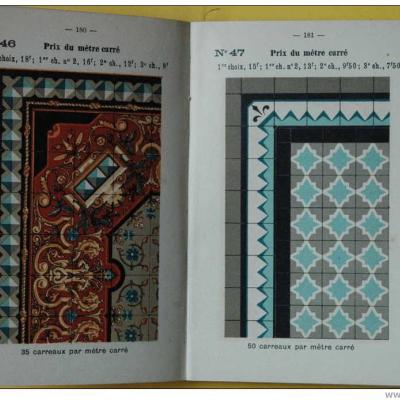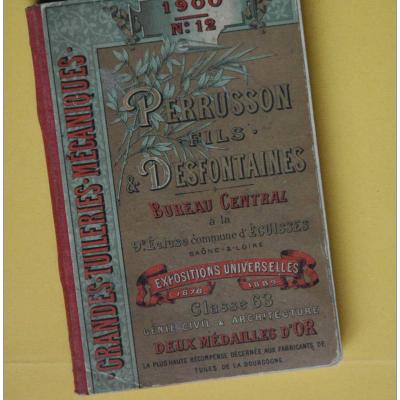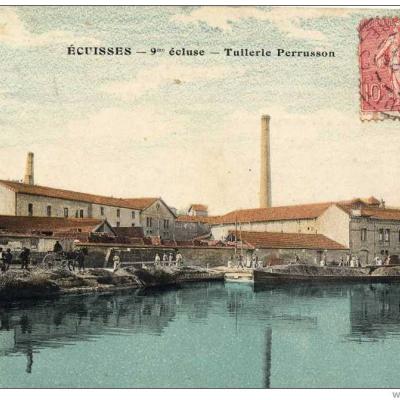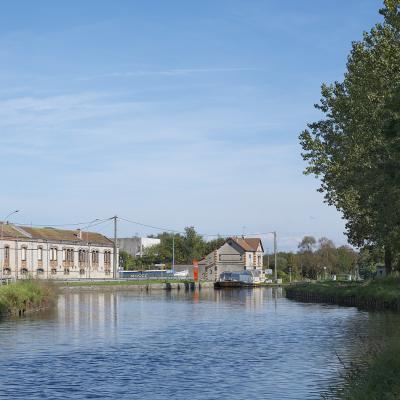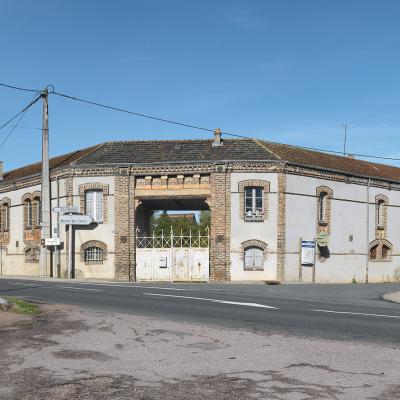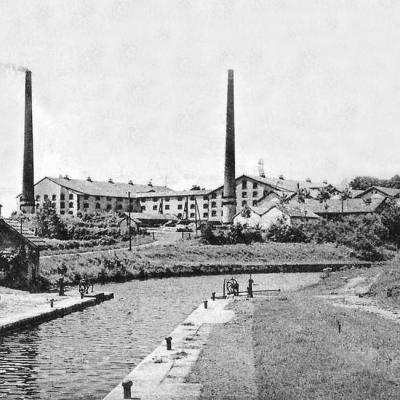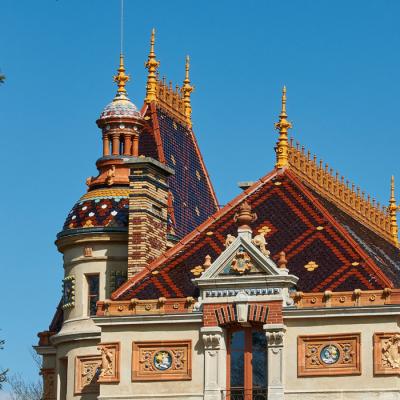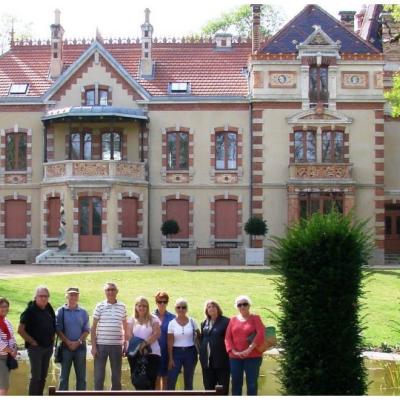A small, 1.75m2 / 19 sq ft. Perrusson handmade floor c.1900
A small, 1.75m2 / 19 sq ft. handmade French ceramic encaustic tile in a palette of sky blue, white, mid-grey and black with sand-coloured detailing in the motif.
The tiles were manufactured by Perrusson et Fils, Desfontaines, France c.1900. The field tiles; two interlocking stylised cross motifs opening up over a four-tile tessellation, are framed by impressive bold, modernist borders, which visually create a 3D impression of design. For provenance, we include in the photo gallery a scan from the period Perrusson catalogue in our possession showing their original presentation 125 years ago.
There are 60 field tiles and 20 border tiles, providing a border linear length of 2.9 linear metres / 9.4 linear feet. The tiles, all 14.3cm / 5.6 inches sq, have restored well, having had their old mortar and years of layered dirt and wax removed, revealing a quality ceramic in excellent condition. There are groutable small chips and occasional edge nibbles on a few tiles, commensurate with their age but adding to their unique patina.
A small floor, it can be laid in a porch, small bathroom, toilet, or as a decorative feature in a larger room surrounded by a complimentary modern ceramic or an antique parquet. And, as is often the case with our antique floor tiles, they can be fixed to walls for stunning and practical effect, providing low-maintenance solutions around Aga's, in chimney breasts, in showers or splash-backs in kitchens or bathrooms. See the client installations section of our website for examples.
Owing to the size of the floor, it will likely only be economical to ship if it is purchased as part of a larger order.
This is one of two floors reclaimed from the same house, both of the same manufacturer and palette. The second floor can be found if your click here
Ceramiques Perrusson, Ecluses - a brief history
Jean-Marie Perrusson was not only known for ceramic tile production but also for the production of bricks and roof tiles. Many of the lozenge themed terracotta mechanical tiles in Burgundy bear the Perrusson hallmark. He built his first brick making factory in 1860 and started mechanical tile production in 1863, to which he added a workshop for manufacturing ceramic tiles in 1875. Further expansion of the ceramic tile production in the Saône-et-Loire was initiated (in Saint-Julien-sur-Dheune in 1866, St. Pantaleon 1870), and even beyond the department (in Sancoins Cher in 1870 and Fontafié in Charente in 1878).
The company was renamed ‘Perrusson Fils et Desfontaines’ in 1890 and the factory also manufactured architectural ceramics and statues. In April 1960, the factory finally closed its doors. The vast majority of the original buildings constructed in 1890/1900 are destroyed, with the offices, changing rooms of the factory, the concierge and the electrical workshop the only significant remnants of the site that can still be seen. The Perrusson factory employed 40 workers in 1860, 80 by 1874, 130 in 1890, 300 at its peak in 1900, 280 in 1930 and 130 from 1945 to 1950.
We have included in the gallery some photos of the beautifully renovated Perrusson family home, with its magnificent facades and roof laden with their impressive tilework, as well as some photos of the original Perrusson factory, parts of which defiantly still stand, but many parts are now lost to the ravages of time.
NOTE Antique tiles were most commonly made in single or two tile moulds. Before current computer automation methods their moulds were made by hand and the colour slips mixed by eye. Kiln temperatures could also be variable, as could the firing time. The result is that tiles often display subtle size and thickness variations and there can be tonal variations in colours, owing to the slip mixing and/or firing time. All of this makes these handmade tiles unique and adds to their charm. Some floors display their subtle variations in size and tones, some not, but when photographing we always take a random section of the floor so that it is representative of the whole. A tiler should always dry lay a section of the tiles to familiarise himself with them before starting to fix lay.
CE267-5



